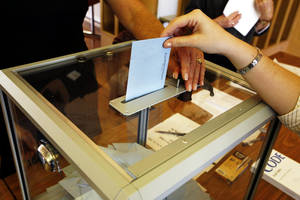Brain shape shows who you'll vote for - People with opposing political views often don't see eye-to-eye, but that might be down to the structure of their brains than anything else, new research has shown.
Previous studies have indicated that genes appear to influence political beliefs, and those with a conservative mindset tend to be more fearful and more likely to react aggressively to threatening circumstances, on average, than their more liberal counterparts.
 Now, seeking to understand the underlying brain basis of this behavioural difference, and writing in Current Biology, UCL scientist Geraint Rees and his colleagues asked 90 adults to indicate where they sit on a numerical political scale ranging from very liberal to highly conservative. The subjects were then brain-scanned to determine the relative sizes of different parts of their brains.
Now, seeking to understand the underlying brain basis of this behavioural difference, and writing in Current Biology, UCL scientist Geraint Rees and his colleagues asked 90 adults to indicate where they sit on a numerical political scale ranging from very liberal to highly conservative. The subjects were then brain-scanned to determine the relative sizes of different parts of their brains.
The more conservative respondents, it turned out, had a larger right amygdala, the structure concerned with aggression and fear, compared with the liberals, who in turn had larger anterior cingulate cortices than the conservatives.
In a series of follow-up tests based on the scan data the team had obtained, they found that they could predict, with over 70% certainty, the reported political allegiances of their study subjects.
One function linked to the anterior cingulate cortex is management of uncertainty and conflicts, suggesting that individuals with more tissue in this brain region might be better able to tolerate uncertainty, underpinning their more liberal stance.
Summarising their results, the team point out that "Our findings show that high-level concepts of political attitudes are reflected in teh structure of focal regions of the human brain. Brain structure can exhibit systematic relationships with an individual's experiences and skills, can change after extensive training, and is related to different aspects of conscious perception. We now show that such relationships with brain structure extend to complex aspects of human behaviour such as political attitudes. This opens a new avenue of research to map high-level psychological features onto brain structure and to interpret sociologically motivated constructs in terms of brain functions."









Comments
Add a comment